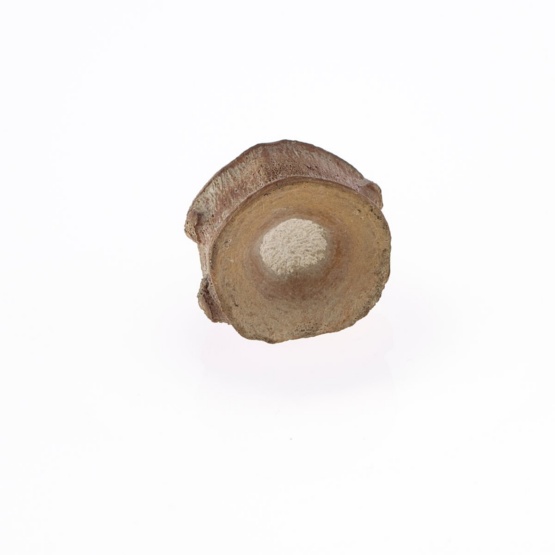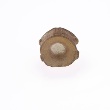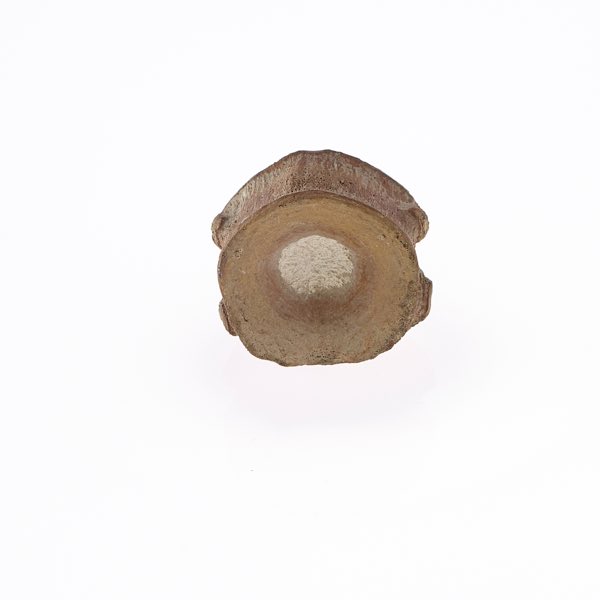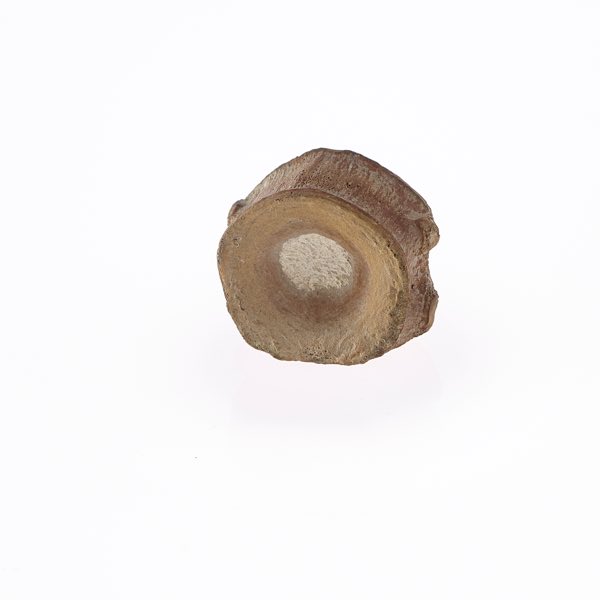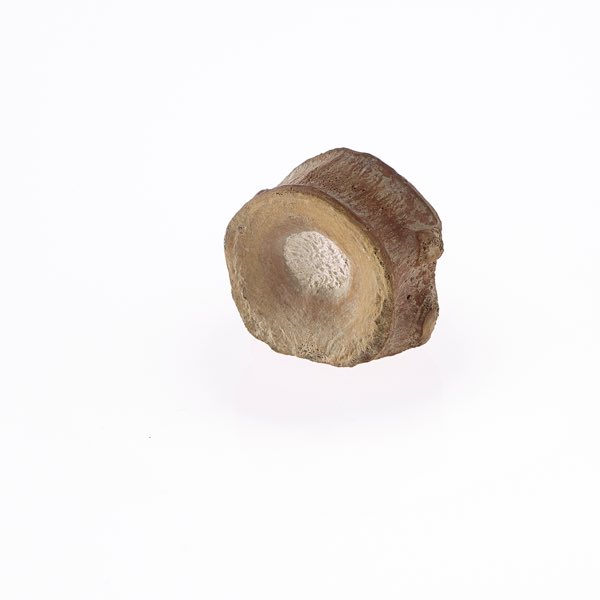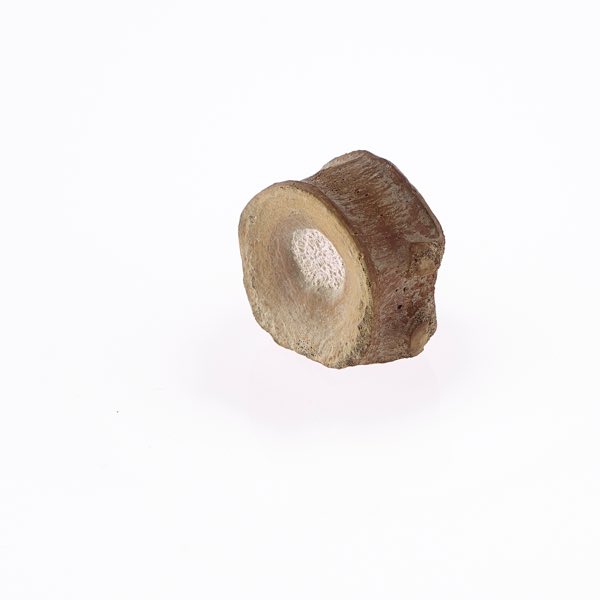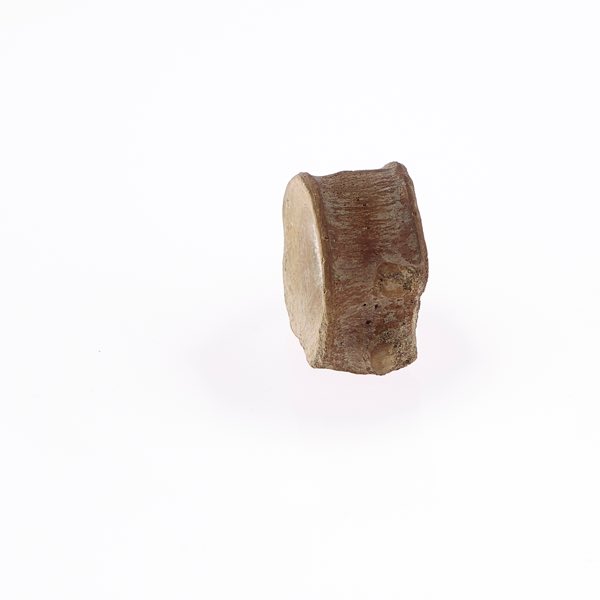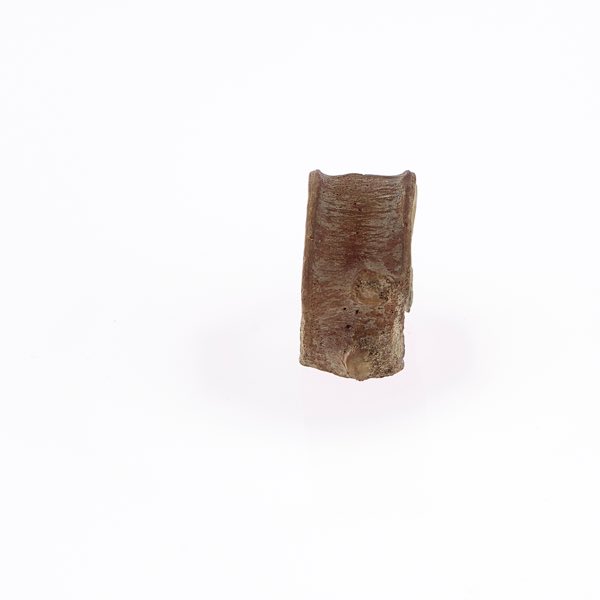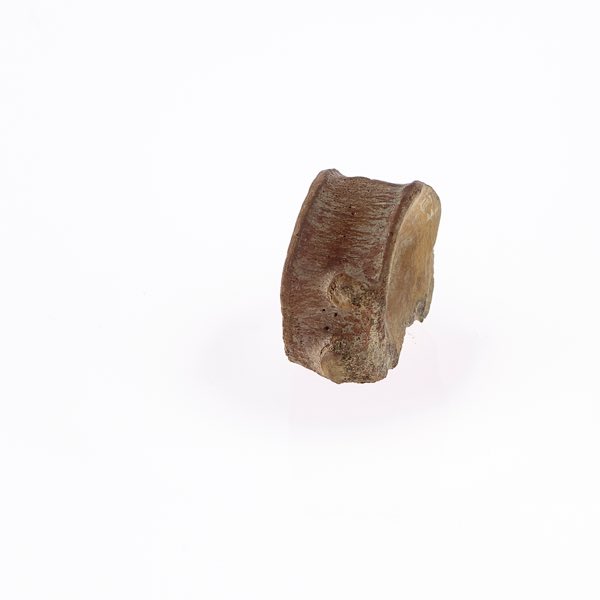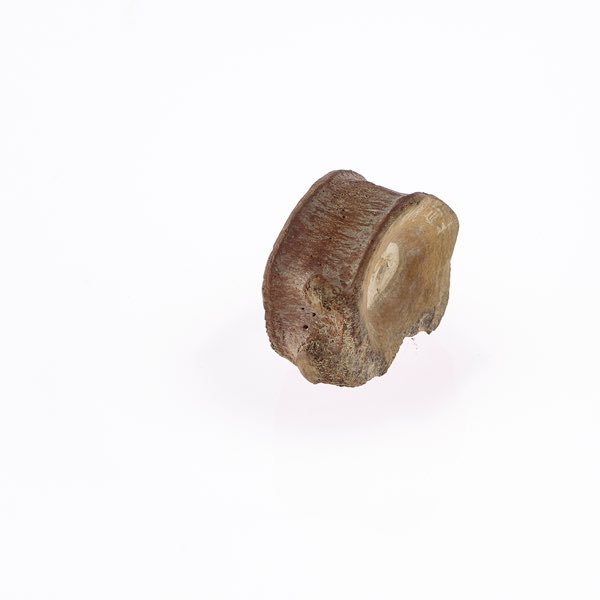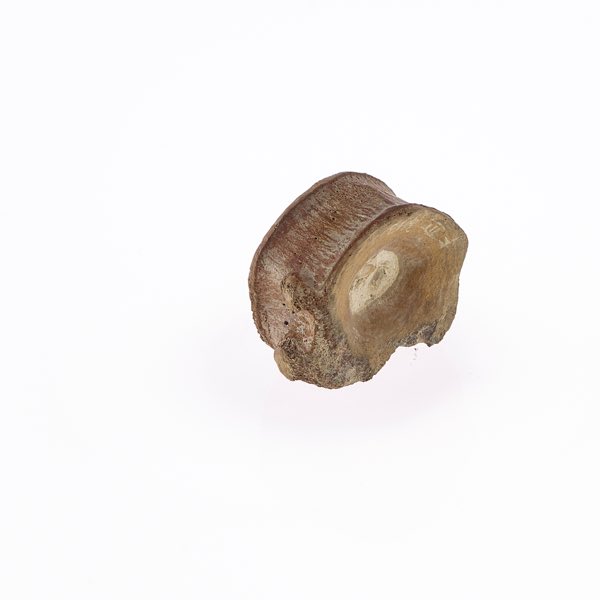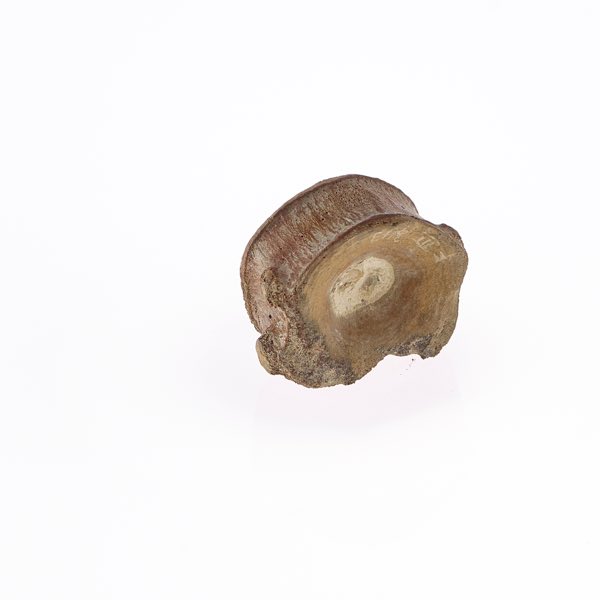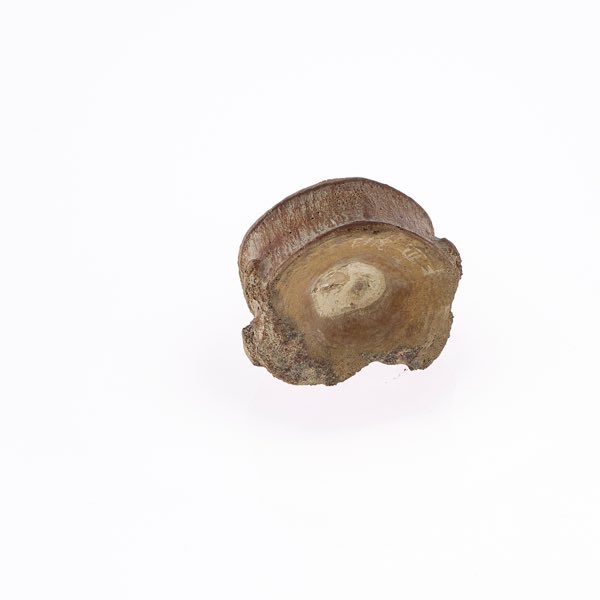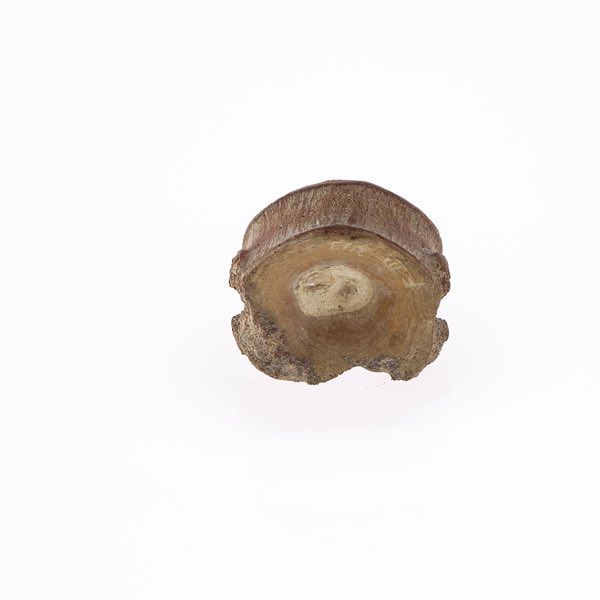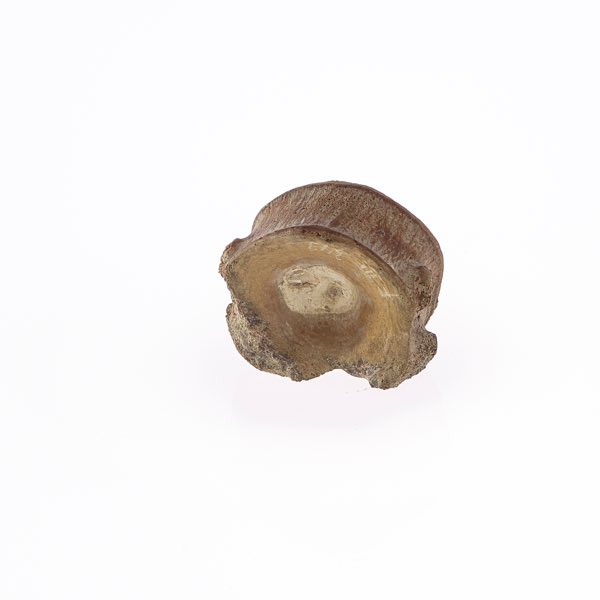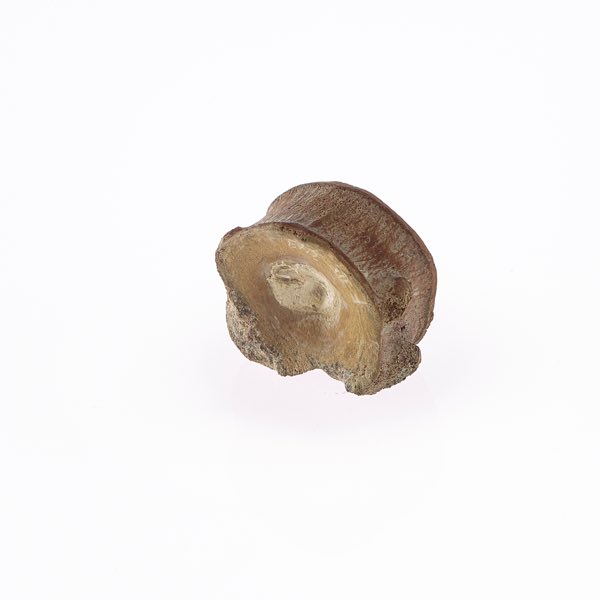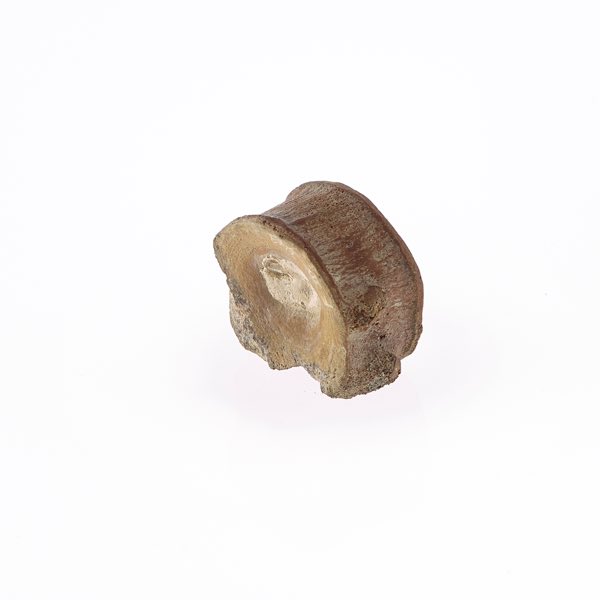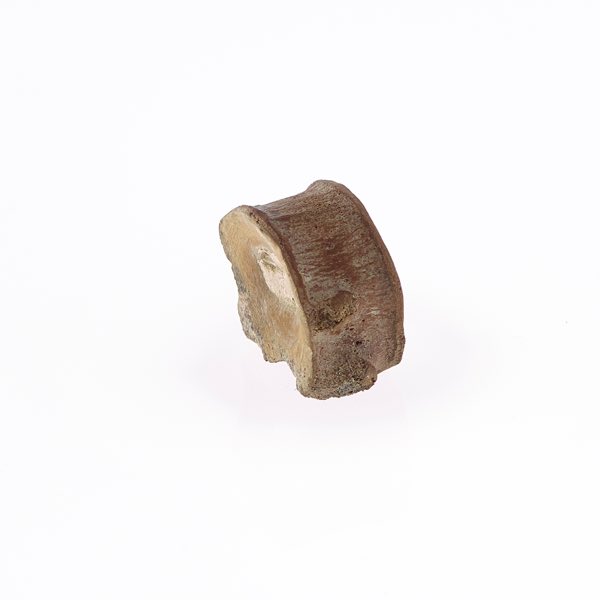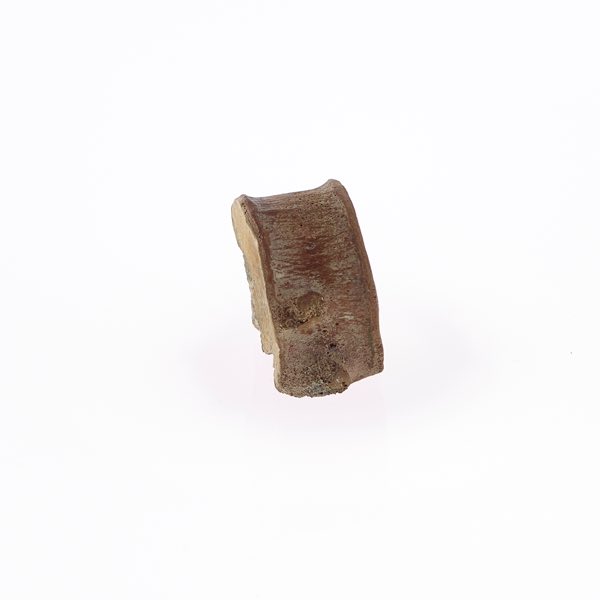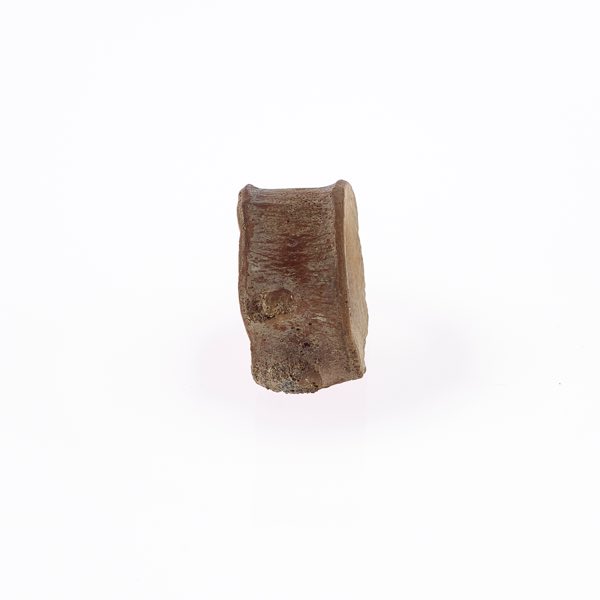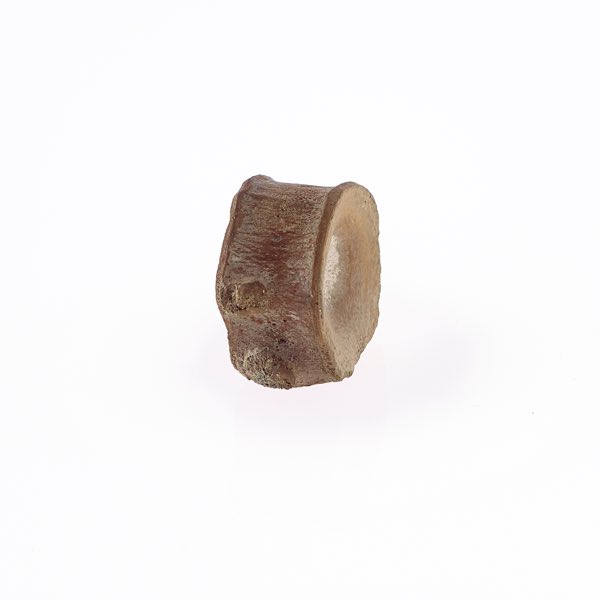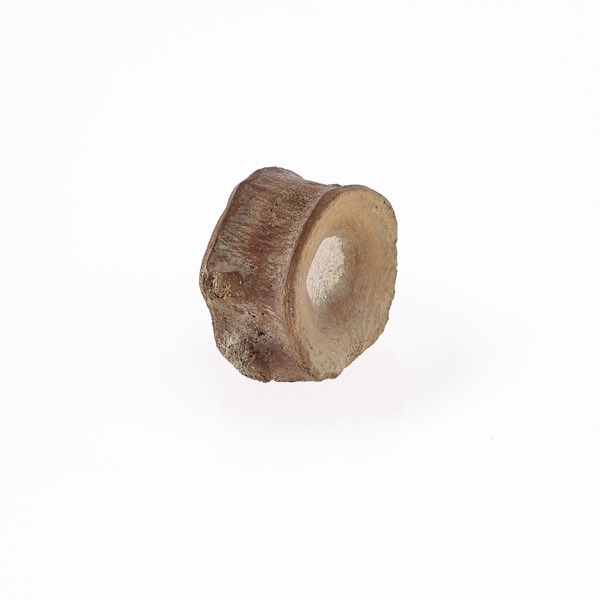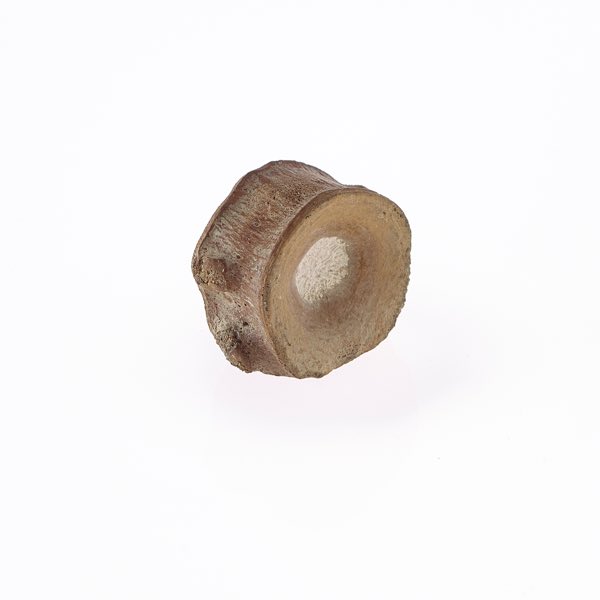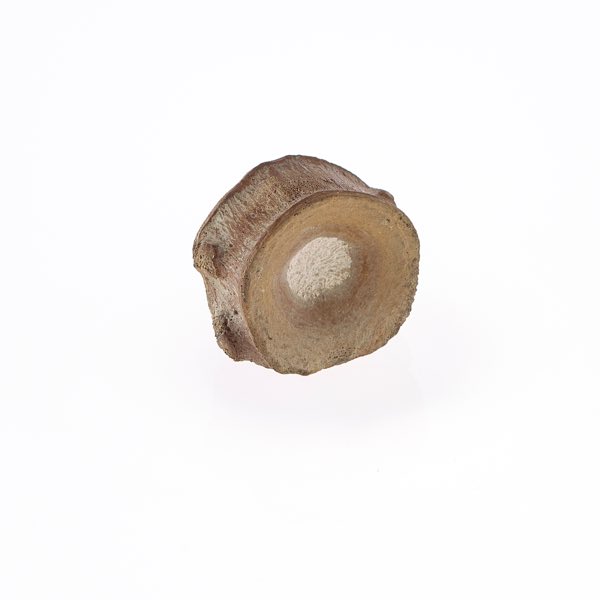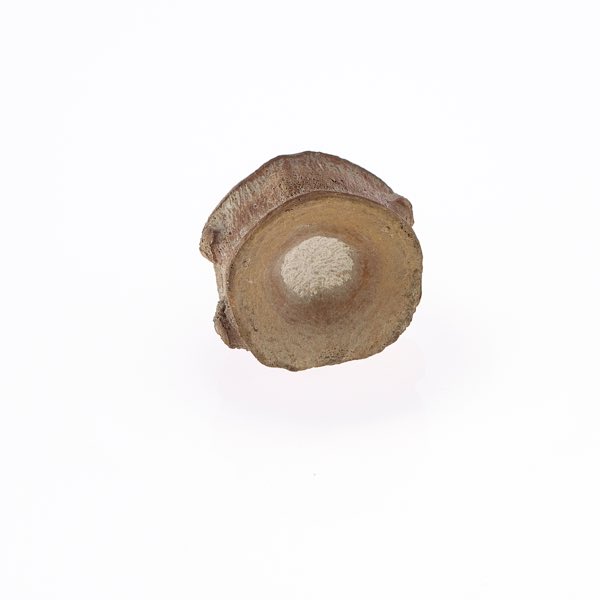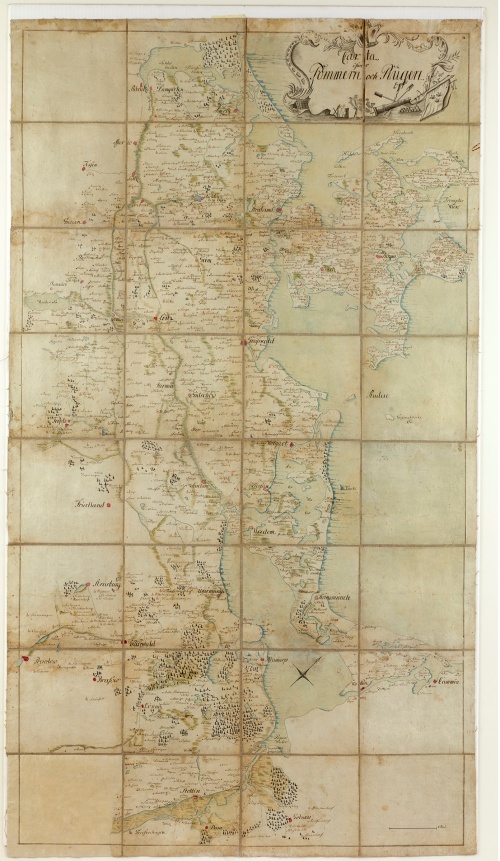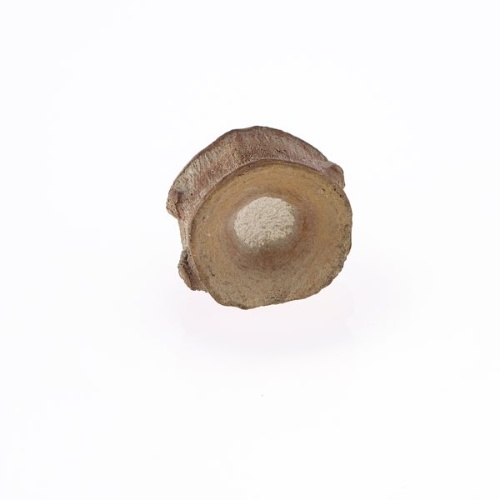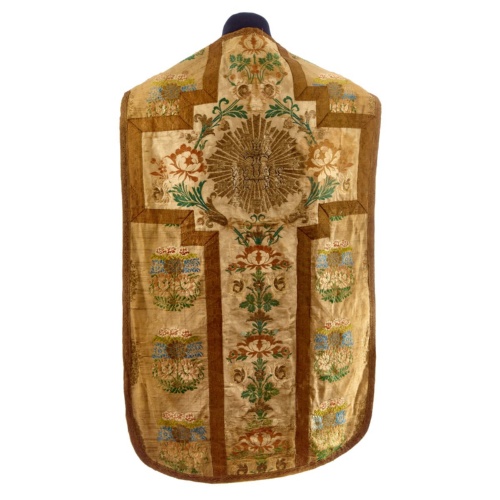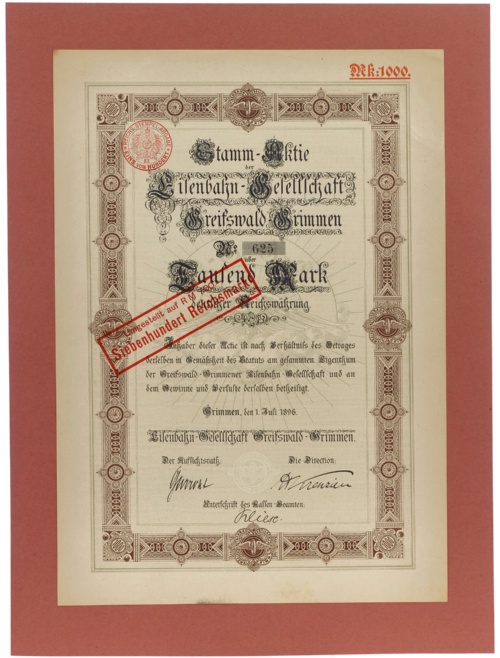Cervical vertebra of a neoichthyosaurus
- found in a Liassic clay pit in Grimmen;
approx. 183 million years old,
height: 3.3 cm
The fossilised cervical vertebra was donated by Helmut Schneider (member of the museum board and geologist). He discovered the cervical vertebra in a former clay pit and submitted it to the newly founded Heimatmuseum Grimmen in 1987. The spine of a neoichthyosaurier is distinguished by the form and the location of its rib connections in the area of the cervical vertebrae. This fossil discovery is a rare example of this animal species from the Early Jurassic period in north Germany.
The sedimentation collected in the pit dates from the later Early Jurassic period. Around 200 million years ago, the super continent Pangaea still connected all other continents, forming one large landmass. A shallow and expansive, intercontinental sea extended across large swathes of central Europe. Interrupted by islands and divided into several trenches by shallower areas, the sea was located in a subtropical climate between 30° and 40° north latitude. It is likely that the places where the Early Jurassic sedimentation formed near Grimmen were originally situated around 150 to 200 km from the coast of Scandinavia.
The Early Jurassic sedimentation from near Grimmen became particularly famous for the rich regalia of species found in its fossilised fauna, as evidenced by ammonites, belemnites, fish and more unusually by the remains of ocean reptiles such as crocodiles and ichthyosaurii.
The sea-dwelling ichthyosaurii are reptiles from the Mesozoic Age that had adapted perfectly to life in the water. Their body length is comparable with today's sharks or tuna. Their front and rear extremities consist entirely of navigational fins, while the crescent-shaped tail fin protruding at right angles to the trunk was used as their main means of propulsion. Ichthyosaurii fed largely on cephalopods such as ammonites, belemnites, although they were not averse to the odd fish and other seagoing reptiles. Their huge eyes indicate that they were able to hunt their prey out in the depths of the ocean. Flat discs form the spines of the ichthyosaurus. There are few fossil records confirming the neural arches that enclose the vertebrae together with the spinal canal.
Text: Se. St
